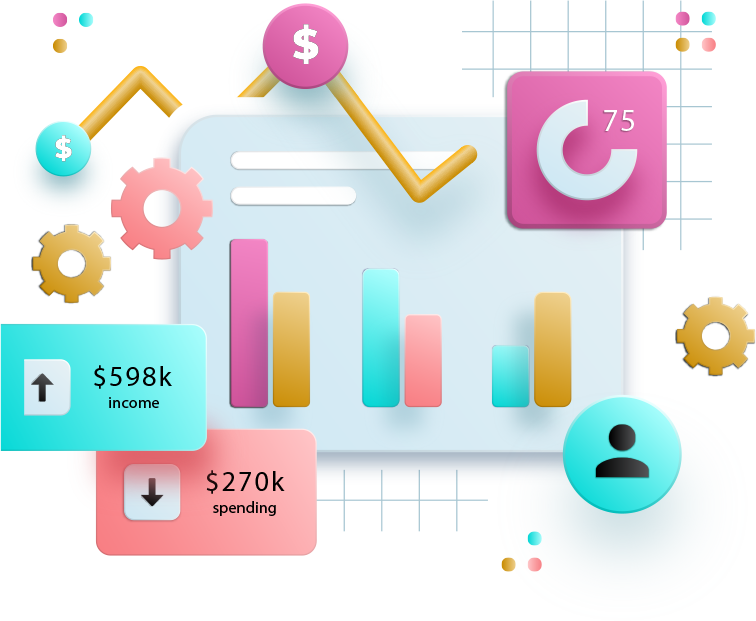
Technology Strategy and Roadmap
What is Technology Strategy and Roadmap?
Technology Strategy and Roadmap is a comprehensive guide created by businesses to plan their digital transformation processes, gain competitive advantage and use technology effectively. This process includes analyzing the current technological infrastructure of businesses, setting long-term goals and clarifying the steps required to achieve these goals.
In today's world where digitalization is accelerating, companies that progress without a systematic technology strategy may face risks such as inefficiency, high costs and loss of competitive advantage. Therefore, a well-planned technology roadmap provides businesses with a more flexible, innovative and scalable structure.
Technology Strategy and Roadmap
Advantages of Technology Strategy and Roadmap for Businesses
✅ Long-Term Competitive Advantage: It offers the opportunity to make a difference in the sector by using technology in a conscious and planned manner.
✅ Cost Optimization: It ensures that unnecessary technological investments are avoided and investments are made in the right areas.
✅ Operational Efficiency: It saves time and resources by optimizing business processes with automation and data analytics.
✅ Flexibility and Scalability: It supports the development of technology infrastructure in parallel with the growth of businesses.
✅ Risk Management: It facilitates taking strategic measures regarding cyber security and data management.


Technology Strategy and Roadmap
How to Prepare a Technology Strategy and Roadmap?
1️⃣ Current Situation Analysis (Technology Assessment Process)
First, the current technology infrastructure and digital maturity level of the business are determined. At this stage, the following questions are answered:
- Which technologies are actively used in the business?
- What efficiency and security issues are there in current processes?
- Is the technology infrastructure up-to-date, are there integration issues?
- Can employees use technology effectively?
- What is the status of the business compared to new technologies used in the sector?
At this stage, a detailed assessment is made using data analytics, surveys, employee interviews and system analysis.
2️⃣ Determining Digital Strategy and Goals
After analyzing the current situation, the digital transformation goals of the business are clarified.
- Automation: Digitalizing business processes to a certain extent and reducing manual processes.
- Data Management: Improving data analytics processes across the business.
- Cyber Security: Strengthening data security policies and complying with regulations.
- Customer Experience: Providing a better customer experience through digital channels.
- Cloud Technologies: Providing flexibility and cost advantage by moving existing infrastructure to the cloud.
These goals should be determined in accordance with the business model and sector of the business.
3️⃣ Creating a Technology Roadmap
🔹 Short-Term Plan (0-6 Months)
- Small-scale technological developments that will provide quick gains and efficiency are made.
- Improvements and cybersecurity measures are taken in existing systems.
- Training is organized to increase employees' use of technology.
🔹 Medium Term Plan (6-24 Months)
- Automation projects are implemented in business processes.
- Data analytics and reporting infrastructure is strengthened.
- New solutions are integrated to improve digital customer experience.
🔹 Long-Term Plan (2+ Years)
- Advanced digital transformation solutions such as artificial intelligence and machine learning are implemented.
- Digitalization strategy is continuously optimized and updated.
- Innovation processes are initiated by closely following new technology trends.


4️⃣ Implementation of Technology Strategy and Continuous Improvement
Once the roadmap is determined, the implementation process begins. However, the technology strategy is not a static document, but a constantly evolving process. Plans should be updated as the business grows and technology changes.
✅ Feasibility studies should be conducted before investing in technology.
✅ Employees should be trained and adapted to digital transformation processes.
✅ Digital KPIs (Key Performance Indicators) should be determined and progress should be measured regularly.
✅ Cybersecurity risks should be considered and data protection policies should be implemented.
Technology Strategy and Roadmap
Basic Technologies Used in the Technology Strategy
🛠 Cloud Computing: Provides scalability by moving infrastructure to cloud-based systems.
🤖 Robotic Process Automation (RPA): Saves labor by automating repetitive processes.
📊 Data Analytics and Big Data: Strengthens decision-making processes of businesses.
🧠 Artificial Intelligence and Machine Learning: Develops predictive analysis and automated decision mechanisms.
🔐 Cyber Security Solutions: Provides data security and regulatory compliance.
